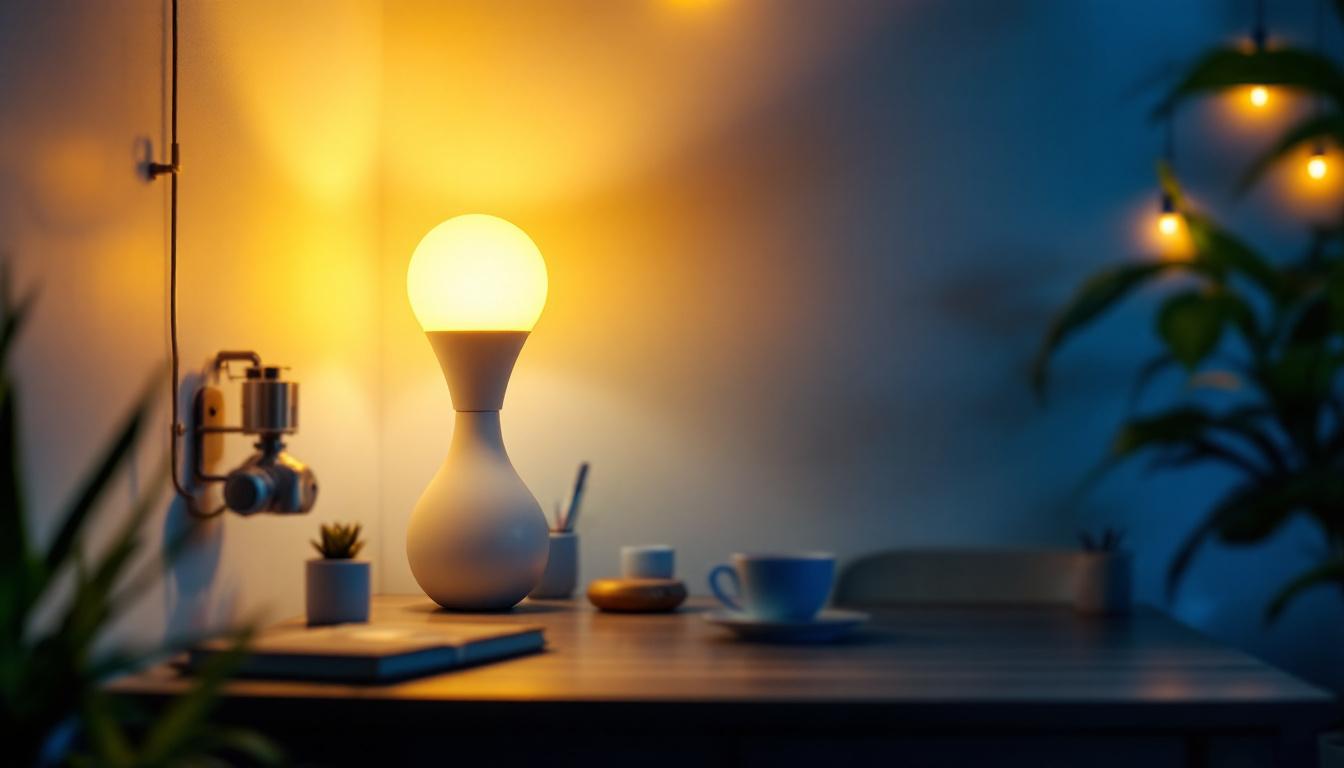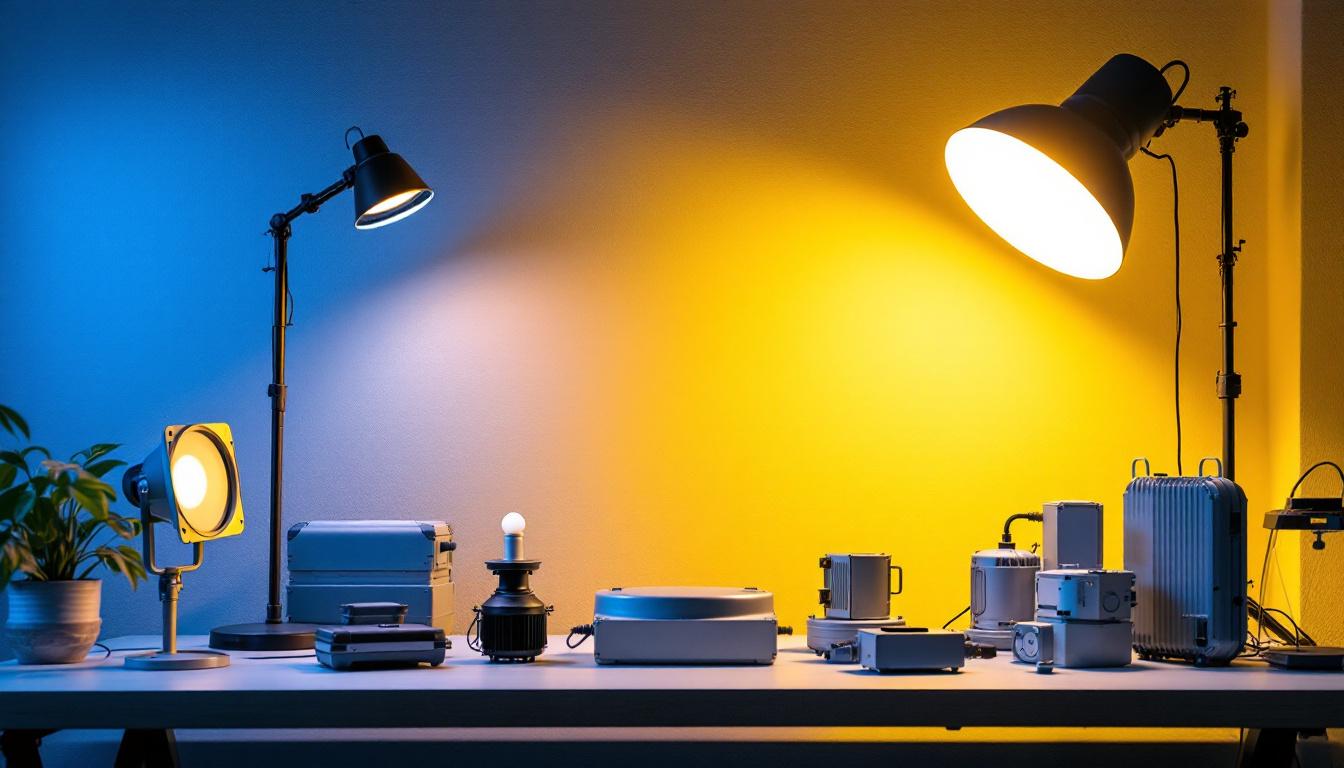
Maxlite LED lamps have carved a niche in the lighting industry by delivering reliable, energy-efficient solutions that suit a wide range of applications. For lighting contractors, these lamps offer a blend of performance, longevity, and cost-effectiveness that can significantly enhance project outcomes.
LED technology itself is a leap forward from traditional lighting, but Maxlite stands out with its focus on quality components and rigorous testing. The efficiency of these lamps is not just about wattage reduction; it’s about maximizing light output while minimizing energy consumption and maintenance costs. This commitment to excellence is reflected in their extensive product line, which includes everything from commercial fixtures to residential bulbs, ensuring that there is a suitable option for every lighting need.
Before diving into optimization strategies, it’s essential to grasp key specifications like lumens per watt (lm/W), color rendering index (CRI), and correlated color temperature (CCT). Maxlite LED lamps often boast high lm/W ratios, meaning more light for less power, and CRI values that ensure colors look natural and vibrant—critical for commercial and retail environments. Additionally, the CCT of Maxlite lamps can range from warm white to cool daylight, providing flexibility in creating the desired ambiance. This adaptability makes them ideal for various settings, whether it’s the cozy atmosphere of a restaurant or the bright, focused lighting of an office space.
Moreover, Maxlite’s commitment to sustainability is evident in their manufacturing processes and product design. Many of their LED lamps are made from recyclable materials and are free from harmful substances like mercury, which is often found in traditional lighting solutions. This eco-friendly approach not only helps reduce the environmental impact but also aligns with the growing demand for sustainable practices in the construction and design industries. As businesses and homeowners alike seek to lower their carbon footprints, choosing Maxlite LED lamps becomes a strategic decision that supports both efficiency and environmental responsibility.
Choosing the correct Maxlite LED lamp starts with understanding the environment and purpose of the lighting. For example, recessed downlights with high lumen output and narrow beam angles suit office spaces, while floodlights with wider beams are better for outdoor security or landscape lighting.
Maxlite offers a variety of lamp types including A-lamps, PAR lamps, MR16s, and linear tubes. Each serves a distinct function and optimizing efficiency depends on selecting the right form factor and beam spread for the space. For instance, A-lamps are versatile and can be used in table lamps or ceiling fixtures, making them ideal for general lighting in homes and offices. On the other hand, MR16s are perfect for accent lighting, allowing you to highlight artwork or architectural features, thus adding depth and character to a room.
Color temperature affects ambiance and productivity. Cooler temperatures (4000K to 5000K) are ideal for workspaces, promoting alertness, whereas warmer tones (2700K to 3000K) create inviting atmospheres in hospitality or residential settings. Maxlite’s range covers these options, allowing contractors to tailor lighting schemes precisely. Additionally, understanding the psychological effects of color temperature can help in creating environments that enhance mood and efficiency; for example, a warm glow in a restaurant can encourage relaxation and prolonged dining experiences.
CRI is equally important. A CRI above 80 is generally considered good, but certain applications—like retail or art galleries—benefit from CRI values above 90 to ensure colors appear true. Maxlite lamps typically offer high CRI models, which can be a selling point when pitching to clients focused on visual quality. Furthermore, the high CRI not only enhances color accuracy but also improves the overall aesthetic of a space, making it more appealing to customers and visitors alike. This is particularly crucial in settings where product presentation is key, such as in fashion boutiques or food displays, where the right lighting can significantly influence purchasing decisions.
Efficiency gains from Maxlite LED lamps can be undermined by incompatible fixtures. Ensure that the lamp base, size, and electrical ratings match the fixture specifications. Using LED-specific fixtures or retrofit kits designed for Maxlite products can improve thermal management and light distribution. Additionally, it is advisable to consult the manufacturer’s guidelines or seek professional advice to ensure that all components work harmoniously together. This attention to detail not only enhances performance but also extends the lifespan of your lighting system.
Thermal management is critical. LEDs perform best at lower temperatures, and overheating can reduce lifespan and efficiency. Maxlite lamps often incorporate heat sinks and advanced materials, but the fixture must support adequate airflow. Installing fixtures in enclosed spaces without proper ventilation can lead to premature failure. Consider using fixtures with built-in ventilation or those designed to dissipate heat effectively, especially in high-output applications. This proactive approach can significantly reduce maintenance costs and improve overall lighting performance.
Where and how you place Maxlite LED lamps affects both efficiency and effectiveness. Position lamps to minimize shadows and glare while maximizing coverage. For example, in a retail environment, angled downlights can highlight merchandise without wasting light on ceilings or walls. Similarly, in office settings, strategically placing task lighting can enhance productivity by ensuring that workspaces are well-lit without causing eye strain. Understanding the specific lighting needs of each area can lead to a more functional and visually appealing environment.
Using lighting controls such as dimmers, occupancy sensors, and daylight harvesting systems can further optimize energy use. Maxlite lamps are compatible with many control systems, enabling contractors to create smart lighting solutions that adjust output based on real-time needs. For instance, integrating daylight sensors can automatically dim or brighten lights based on the amount of natural light available, ensuring that energy is not wasted. Additionally, occupancy sensors can turn lights off in unoccupied areas, providing both energy savings and increased convenience. These advanced technologies not only enhance the user experience but also contribute to sustainability efforts by reducing overall energy consumption.
Incorporating Maxlite LED lamps into a controlled lighting system enhances efficiency dramatically. Dimming capabilities allow for reducing power consumption during low-occupancy periods without sacrificing visual comfort. Occupancy sensors ensure lights are only on when needed, cutting wasted energy. This not only contributes to sustainability efforts but also aligns with the growing demand for energy-efficient solutions in both residential and commercial spaces.
Daylight sensors adjust lamp output based on natural light availability, which is especially useful in spaces with large windows or skylights. These controls can reduce energy use by up to 40%, a significant saving on operational costs. Moreover, the integration of these technologies can lead to improved occupant well-being, as studies have shown that natural light exposure positively impacts mood and productivity. By optimizing lighting conditions, businesses can create more inviting environments that enhance employee satisfaction and performance.
Maxlite lamps can be integrated into smart building systems, offering remote monitoring and management. This enables predictive maintenance by tracking lamp performance and alerting contractors or facility managers before failures occur, reducing downtime and maintenance expenses. The ability to analyze usage patterns also allows for further optimization of lighting systems, ensuring that energy is used efficiently throughout the day.
Smart lighting also supports scene setting and scheduling, enhancing user experience while optimizing energy use. For contractors, offering these advanced solutions adds value and positions them as forward-thinking professionals. Furthermore, the interoperability of smart lighting with other IoT devices, such as HVAC systems and security cameras, creates a cohesive ecosystem that can be managed from a single platform. This integration not only streamlines operations but also provides valuable data analytics that can inform future upgrades and improvements, making it an attractive proposition for building owners looking to invest in long-term efficiency and sustainability.
Dust and dirt accumulation on lamps and fixtures can reduce light output by up to 30%. Scheduling regular cleaning ensures Maxlite LED lamps maintain their brightness and efficiency. Inspecting for signs of wear or damage helps catch issues early.
While Maxlite LEDs have long lifespans, no lamp lasts forever. Monitoring lumen depreciation and replacing lamps before significant output loss is crucial. Upgrading to newer Maxlite models with improved efficiency or features can also enhance overall system performance.
A mid-sized office building replaced fluorescent tubes with Maxlite LED linear tubes and integrated occupancy sensors. The retrofit reduced energy consumption by 55%, cut maintenance costs, and improved lighting quality, resulting in higher occupant satisfaction.
A retail chain switched to Maxlite LED PAR lamps with high CRI and adjustable beam angles. The improved lighting enhanced product visibility and color accuracy, driving increased sales while lowering energy bills by 40%.
Optimizing Maxlite LED lamps for maximum efficiency involves more than just swapping out bulbs. It requires thoughtful selection, proper installation, smart controls, and ongoing maintenance. Lighting contractors who master these elements can deliver superior lighting solutions that save energy, reduce costs, and improve client satisfaction.
With the right approach, Maxlite LED lamps become not just a product choice but a strategic advantage in lighting projects.
Ready to harness the efficiency and sustainability of Maxlite LED lamps for your next project? Look no further than LumenWholesale, where we provide contractors with the highest quality, spec-grade lighting products at unbeatable wholesale prices. Say goodbye to local distributor markups and hello to our extensive selection that meets rigorous industry standards. With LumenWholesale, you can enjoy the convenience of bulk buying with free shipping, ensuring you get the premium lighting you need at the best price — no hidden fees or compromises. Elevate your lighting solutions today by visiting Wholesale Lighting at the Best Value and take the first step towards a brighter, more efficient future.

Explore the transformative journey of HPS lamps in the lighting industry, from their innovative beginnings to their enduring impact on modern illumination technology.

Discover essential compliance insights for lighting contractors in this comprehensive guide to Wall Pack LED Lights.

Discover how a ballast can transform your lighting projects by enhancing efficiency and performance.

Discover essential insights into basketball court lighting with this comprehensive guide tailored for lighting contractors.